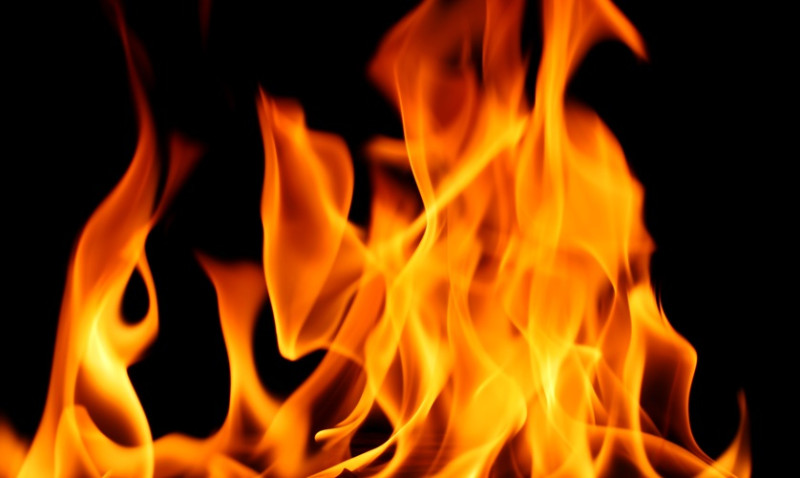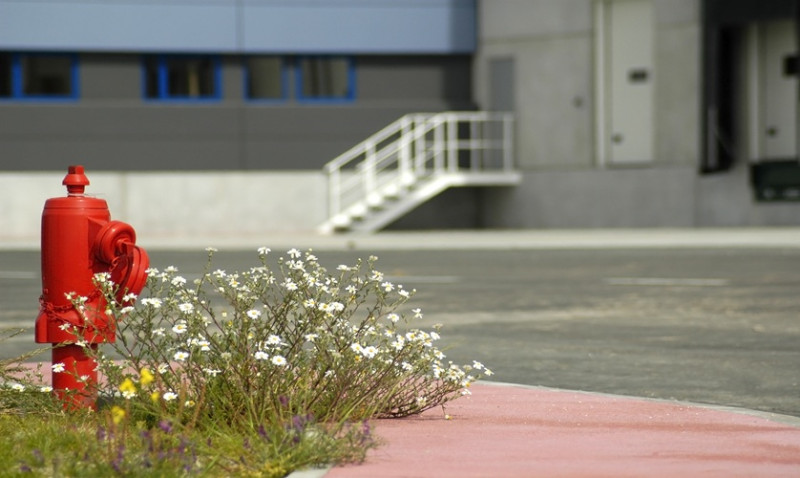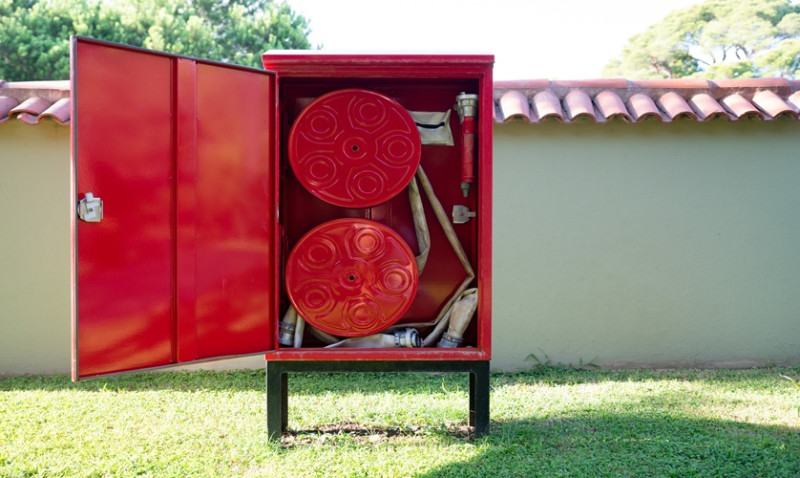
With increasing wildfire incidents across the UK and Europe due to climate change, homeowners are becoming more conscious of protecting their properties from fire damage. For those living in rural or forest-adjacent areas, the threat of wildfire is no longer hypothetical—it's a matter of when, not if. In response to this growing concern, innovative solutions are emerging to safeguard homes from afar. One particularly promising development is the giant firefighting sprinkler system, a product that could buy you precious time and potentially save your property if you're ever forced to evacuate due to fire risks.
This blog post explores how these sprinklers work, why they’re gaining popularity among property owners and professionals alike, and how they could become a vital addition to your fire prevention toolkit.
What Is a Giant Firefighting Sprinkler System?
Unlike traditional lawn sprinklers or indoor fire suppression systems, a giant firefighting sprinkler is specifically designed to provide full exterior coverage to your home during a fire emergency. These systems are usually portable or semi-permanent, and when activated, they saturate the building’s exterior, surrounding landscape, and roof – creating a moisture barrier that significantly reduces the chances of embers or direct flames igniting the structure.
These systems are typically powered by either water mains or high-capacity pumps hooked to water tanks, ponds or swimming pools. More advanced setups come with remote activation options, allowing homeowners to start them remotely via a smartphone or computer — even if they’ve already evacuated.
While it’s not a one-size-fits-all solution and doesn’t replace proper fire-resistant construction or vegetation management, it can work in tandem with these methods to maximise your property's protection during a wildfire event.
Why Wildfire Defence Is Becoming a Priority in the UK
The UK has historically seen lower risk compared to countries like Australia or the western United States, but things are changing. In recent years, prolonged heatwaves and drought-like conditions have helped create the perfect storm for wildfires. Local fire services have reported a marked increase in both the frequency and intensity of landscape fires, especially in regions like Surrey, Dorset, the Yorkshire Moors and parts of Scotland.
With many residents having limited access to fire suppression resources—especially in remote areas—it makes sense to invest in systems that can operate autonomously. This is especially true for those who might not be able to return home due to road closures or evacuation directives.
Whether you're a DIY enthusiast living on a countryside plot or an architect designing for fire-prone developments, wildfires are now a real-world consideration that can’t be ignored. With the convenience and additional protection that these sprinkler systems offer, they’re quickly becoming a viable solution for fire-prone homes.
How the System Works: A Technical Overview
The typical setup includes a high-output sprinkler head mounted on rooftops or elevated poles around the property perimeter. They are connected to a robust water supply — often through a fire pump system capable of maintaining high pressure for extended periods.
Some advanced models are customizable with multiple zones, allowing users to choose specific areas to saturate depending on the wind direction or the fire’s path. Many systems are integrated with fire detection devices, including heat or smoke sensors, which can automatically trigger the spray if conditions suggest imminent danger.
Newer variants support smart connectivity, enabling monitoring and manual control from smart devices. This is particularly important if you’ve had to evacuate but want to activate the system remotely or receive alerts about the fire’s progress and the status of your home defence mechanisms.
Cost Considerations: Is it Worth the Investment?
Budgeting for a giant firefighting sprinkler system will vary based on your property size, your current water infrastructure, and whether you opt for a DIY kit or a professionally installed solution. On average, installing a mid-range system on a standard detached house may cost between £1,500 and £5,000.
DIY kits can be installed by confident homeowners and often come with comprehensive instructions. These are more affordable and flexible, but they might lack the power and automation of professional-grade systems. Professional systems tend to come with better warranties, more robust components, and remote activation features — particularly valuable for high-risk areas or second homes.
If you assess this cost in the context of protecting a several hundred-thousand-pound investment (your home), it becomes clear that the investment could not only save your belongings but also reduce insurance premiums and post-fire rebuild costs.
Who Could Benefit From Installing One?
This type of system is particularly attractive to a wide range of property owners and professionals:
- DIY enthusiasts enthused about taking technological control of home security systems and happy to carry out the installation themselves.
- Young professionals who have invested in a countryside getaway residence or plan to work remotely in quieter, rural areas where fire services may be slower to respond.
- Architects and designers aiming to add an additional layer of safety in fire-risk zones, either as a design feature or to meet future building regulation requirements.
- Professional tradesmen or small-scale developers looking for upgrades to offer in high-value or modern homes as part of a comprehensive security package.
The appeal of these systems is not only in their power, but also in their adaptability. They can be scaled to suit cottages, barns, large detached properties and entire estates where traditional fire defences may be ineffective.
Additional Fire Defence Tips for Homeowners
To complement a firefighting sprinkler system, consider integrating a complete way-of-life approach to fire safety:
- Clear dry vegetation and flammable debris from within 5-10 metres of your home's perimeter.
- Choose fire-resistant materials for fences, cladding and roofing — metals, stone and specially treated wood are good options.
- Install ember-resistant vents and consider rooftop barriers to keep out wind-blown sparks.
- Maintain an emergency water supply in the form of a rain tank, garden pond or reserve barrel.
- Have a home evacuation plan, and keep a fire emergency backpack in your car and entrance area.
Combining these proactive steps with a fire sprinkler system dramatically increases your home’s resilience to wildfires and boosts peace of mind during fire season.
How to Choose the Right System for Your Home
Before purchasing a firefighting sprinkler system, it’s important to assess a few key points:
| Consideration | Description |
|---|---|
| Water Supply | Ensure access to a reliable high-pressure source (mains, pool or tank). |
| Property Size | Larger homes require more sprinkler coverage and higher flow rates. |
| Automation Needs | Do you need remote control features or automatic fire detection? |
| Installation Level | Decide between a DIY kit or a fully installed professional system. |
| Budget | Factor in both upfront cost and potential insurance reductions. |
Consulting a fire safety expert or licensed installer can help you identify the best solution and ensure compliance with local regulations where necessary.
Conclusion: The Future of Wildfire-Ready Homes
With extreme summer weather becoming the norm across parts of the UK, the need for proactive fire prevention measures is more pressing than ever. A giant firefighting sprinkler system may seem like something out of a Californian fire zone, but it’s quickly becoming a practical and effective tool for UK homeowners, design professionals, and tradesmen seeking to secure homes against emerging fire risks.
Whether you're investing in your family's safety, protecting a lifetime investment in property, or upgrading your offerings as a trades professional or architect, installing a firefighting sprinkler system is a forward-thinking decision. Especially when time is limited and evacuation becomes necessary, having a system on standby that can work independently could make the difference between a total loss and a saved home.






